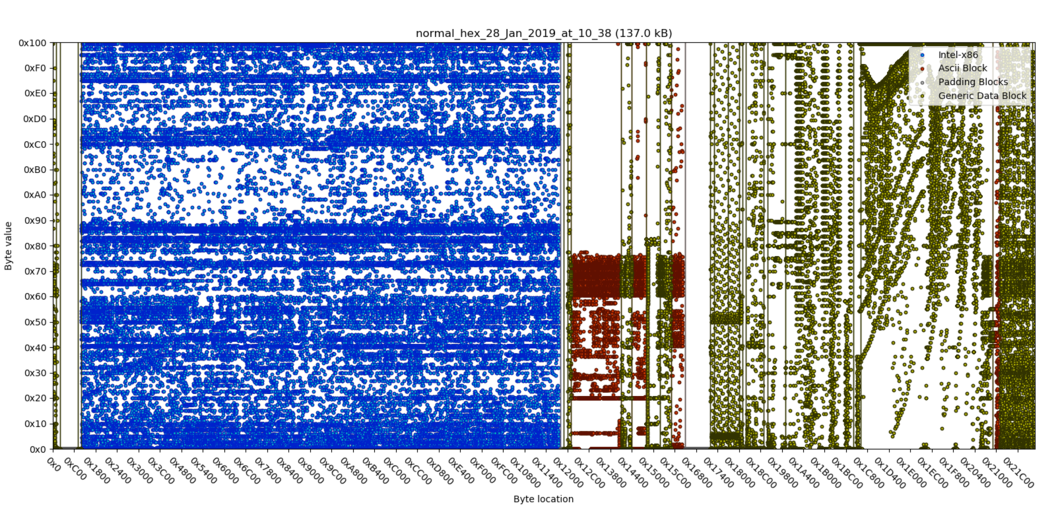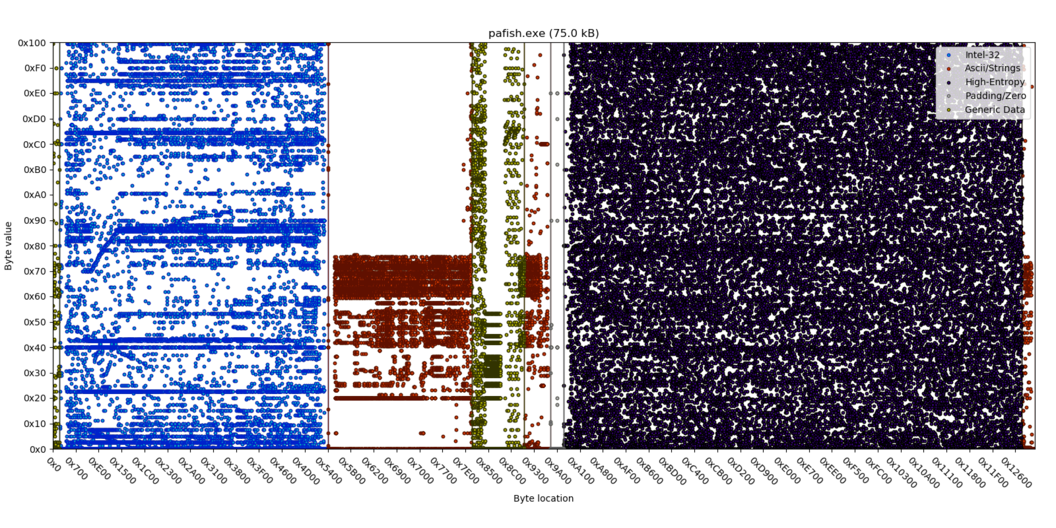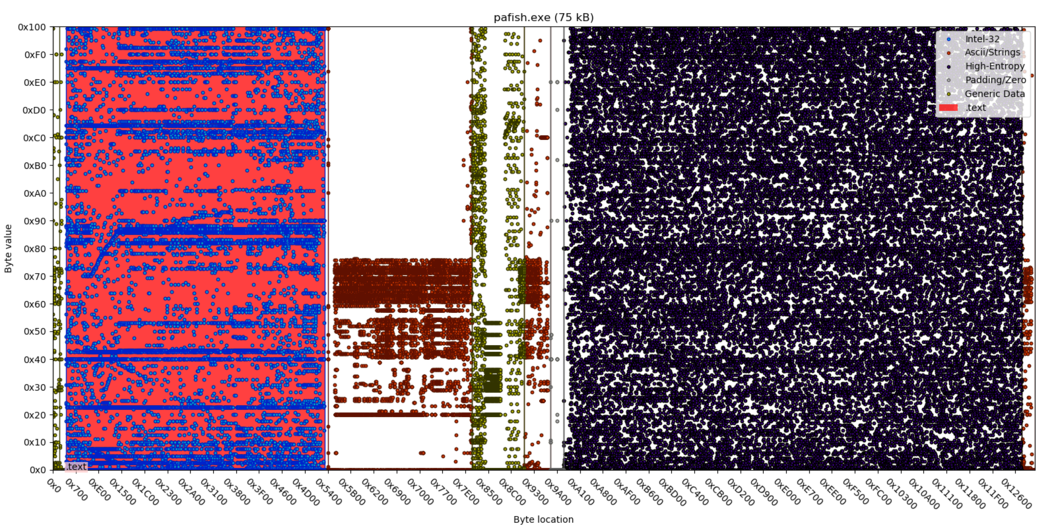The Codescanner detects machine code in files and identifies the cpu architecture, endianness, and bitness. It can be used against data files (pdf, jpgs, unknown binary files).
Version: 1.3.0
Last changed: 10. May 2022
The Python 2/3 analysis framework and the Codescanner core in standalone
binary form as well as library form, with C/C++ headers.
The directory C_lib contains the C/C++ backend and C headers.
Copyright © Fraunhofer-Gesellschaft zur Förderung der angewandten Forschung e.V.
All rights reserved.
Please read the included LICENSE. This program is free for academic use and research.
In case you want to use it in a commercial project you can write an email.
- Viviane Zwanger (Codescanner core, old Python bindings) (viviane.zwanger@fkie.fraunhofer.de)
- Henning Braun (Maintainer of the modern Python bindings) (henning.braun@fkie.fraunhofer.de)
- Python2 >= 2.7 or Python3 (Warning: Python2 will soon become deprecated.)
- matplotlib
- numpy
sudo pip install . The installation works as well without sudo for the current user.
sudo pip uninstall codescanner_analysisSkip the sudo, if codescanner_analysis was installed without it, i.e. just for the current user.
from codescanner_analysis import CodescannerAnalysisData as CAD
cad = CAD(filenamepath, (0xstartOffset), (0xendOffset))
cad = CAD(filenamepath)
cad = CAD(filenamepath, 0x100, 0x2000)cad.regions.get("Code")
cad.regions.get("Ascii")
cad.regions.get("Data")
cad.regions.get("HighEntropy")
for coderegion in cad.regions.get("Code"):
print("Coderegion: 0x%x - 0x%x (%s)" % (coderegion[0], coderegion[1], coderegion[2]))cad.sizes.get("Code")
cad.sizes.get("Ascii")
cad.sizes.get("Data")
cad.sizes.get("HighEntropy")
cad.sizes.get("FileSize")
for s in cad.sizes:
print("%s : %i" % (s, cad.sizes[s]))cad.architecture
cad.architecture.get("Full") # Full Codescanner CPU architecture string
cad.architecture.get("ISA") # ISA only (e.g., Intel, Arm, etc)
cad.architecture.get("Bitness") # If relevant.
cad.architecture.get("Endianess") # If relevant.There are two different types of plots: byteplots that plot each byte (cad.BYTE_PLOT alias (1)) and colormaps (cad.COLOR_MAP alias (2)). Byteplots are generally considered best. For large files colormaps become increasingly powerful, since matplotlib has certain limits to how much points (bytes) can be plotted on a canvas. A typical Codescanner plot of a benign executable is shown below.
dpi = 100 # recommended: dpi=75, 100, 150.
plot_type = cad.BYTE_PLOT # (1) or cad.COLOR_MAP (2)
cad.plot_to_file('img/file/name', dpi, plot_type)
cad.plot_to_file('/tmp/a.png', dpi)
# Dynamic-size plots are possible with:
width = 1600
height = 1000
cad.plot_to_dynamic_size_file('/tmp/a.png', dpi, width, height, plot_type)plot_type = cad.BYTE_PLOT # (1) or cad.COLOR_MAP (2)
buffer = cad.plot_to_buffer(dpi, plot_type)
buffer = cad.plot_to_buffer(100)The buffer can then be used elsewhere. For example, it can be encoded to base64 and then be included as an image in an html-sheet.
The ColorMap plot may be useful, if the input file is very large, exceeding the plotting capabilities of matplotlib and the users RAM.
The ColorMap and BytePlot classes may be used independently.
You may cross check the code regions found by Codescanner by comparing them visually with executable-flagged regions ELF/PE header. (By default, this is done using Headerparser, or as a fallback, objdump.) This can be useful to see if the binary has a strange/unusual layout. Examples of potential interest: packed/dropper, ROM files, and other manipulation.
from codescanner_analysis.comparison_analysis import ComparisonAnalysis as COMA
coma = COMA(filepathname)
# This will (try to) overlay code regions of header with code regions of Codescanner.
coma.plot_to_file(outpngfile, dpi=xx) # dpi common values: 75 or 100
# Check if code regions from header are inside file (e.g., not true for ROM files or memdumps).
print(coma.are_code_regions_in_file())
# Code regions by Codescanner (Alien regions are code regions only found by Codescanner and not found py parsing the header.)
for r in coma.cs_regions:
print("%s : %s" % (r, coma.cs_regions[r]))
# Code regions as found by parsing the header.
for r in coma.x_regions:
print("%s : %s" % (r, coma.x_regions[r]))
The PE header matches the code region found by Codescanner exactly (red overlay). Everything absolutely normal as expected. (This can look different, e.g., malware or dropper...)


